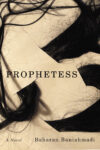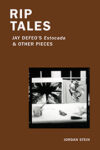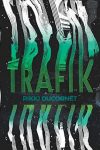This essay was first made available last month, exclusively for our Patreon supporters. If you want to support Full Stop’s original literary criticism, please consider becoming a Patreon supporter.
In Central America, too, the revolutions were experienced as literary events — although this meant something altogether different than in the United States, where literary culture remained too cloistered, too isolated, to become the stuff of politics. In The Last Great Road Bum, we can perceive, like a cry in the distance, the howl of an internationalist literature that almost was.
The Last Great Road Bum — Héctor Tobar [MCD; 2020]
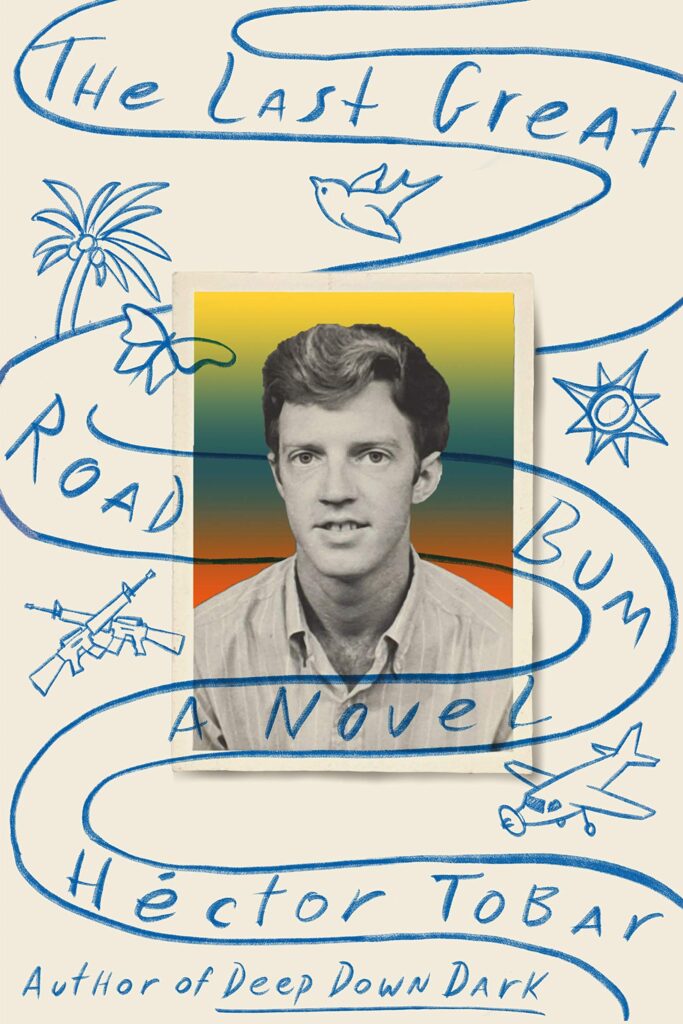
During the 1970s, militants from Nicaragua and El Salvador traveled on clandestine political missions to the United States. Their objective was straightforward, if ambitious: to enhance the global conditions of possibility for Central America’s nascent revolutionary movements by going behind enemy lines, so to speak, and spreading their message inside the North American superpower itself. The traveling militants rightly understood that the survival of their political projects rested, in no small part, on the strength of their transnational bonds.
For the Central American revolutions to be successful, the interventionist appetites of the US security state would have to be restrained by a counter-hegemonic force within that country’s own polity — and that would require organizing across national divides. The revolutionaries rose to the challenge. With time, a durable cross-border circuitry developed, capable of disseminating information, mobilizing direct action, and procuring material aid in communities across the continent.
Some followed that circuitry straight to the heart of the action. In the 1980s, a steady stream of North American internacionalistas (foreign solidarity workers) ventured to Central America, intending to contribute directly to the struggle. In 1983 alone, according to the New York Times, some 650 US-based volunteers traveled in organized groups to state farms and cooperatives across the Nicaraguan countryside, as guests of the revolutionary government, to bring in that year’s coffee harvest. Participants in these “harvest brigades,” as they were called, included a New York City cab driver, a secretary from Dallas, and a Republican stockbroker from suburban Pennsylvania; “these are mainstream people,” one organizer remarked.
Thousands more would embark on similar trips to Central America by the end of the decade. And not only to pick coffee. Internacionalistas built homes, paved roads, established clinics, designed bridges and dams, installed computer technologies, administered medicines, delivered building materials, carried guns. The solidarity movement that unspooled itself across the western hemisphere during the long 1980s included all sorts: militant socialists of the New Left, congregants of Christian peace churches, human rights advocates, students, union members, detachments of anti-war veterans, and “mainstream people.” They called their work ‘accompaniment,’ a reminder that their highest task was, simply, to be there. To journey to the flashpoints of a hemispheric struggle against poverty and tyranny, and to bear witness to both atrocity and triumph.
This vision, so full of hope, contrasted sharply with the disorientation and despair that afflicted so much of the world at the end of the Cold War. In the darkest of geopolitical nights, as the global neoliberal consensus began asserting itself under the military guarantorship of the United States, Central America shone like a beacon. In this context, all kinds of people took the notion that to step off a plane in Managua or San Salvador was to stride confidently into history, or at least onto the world stage. And not everyone arrived as part of a brigade or delegation. Maybe it was a sign of the times: political novices of all stripes, dreamers and wanderers and road bums, kept showing up in popular assemblies and guerrilla theatres, thousands of miles from home, asking to help out. And when the interlopers were invited to arm themselves and train as militants, or to risk death by building essential infrastructure in villages besieged by counter-revolutionaries, or simply to bring in the cotton and coffee harvests — to do peasants’ work, so the peasants could wage their war against the imperialists year-round — more than a few of them actually did it.
One of those who actually did it was Joe Sanderson, the subject of Héctor Tobar’s strange and exhilarating new novel. The Last Great Road Bum is a work of fiction, but it tells the story of a real person — a compulsive traveler and aspiring novelist from the cornfed heart of North America who arrived in El Salvador in 1979, an inquisitive gringo stumbling blind. After a few months, however, Joe was sleeping in safehouses and robbing military arsenals in the company of the People’s Revolutionary Army (ERP). By the time the FMLN (“Fellow Merchants of Leftist Non-sequiturs,” in Joe’s personal writings) launched a nationwide offensive in 1981, he was a bona fide internacionalista militant, fully integrated into a guerrilla cell.
Joe’s voice, both imaginary and true (that is, reproduced from Joe’s own writings) peppers the text of Tobar’s novel, occasionally even sparring with the author from the footnotes. It’s clear that, for Joe, this is a story he’s been waiting decades to tell. But he wasn’t able to narrate his experience from inside of it. Instead, it is Tobar, writing almost forty years after Joe’s final pen-stroke in El Salvador, who captures the spirit of Joe’s life and times, reconstructed from an intimate archive compiled over years of research — reams of letters Joe sent to his family during two decades of travel; youthful ephemera saved by a former lover; even a journal, Joe’s last, preserved for decades by his compañeros in Central America.
Seen from certain vantage points, the world of the mid-twentieth century was a sloping surface, a downhill landscape somehow both rugged and untroubled, which someone like Joe could easily surf and slide across. One such vantage point was the American land-grant university, where Joe’s route to road-bumming began.
In The Last Great Road Bum, Joe’s first trip out of the country comes in the late 1950s, when his father Milt, an entomologist and professor at the University of Illinois, brings the teenage Joe along on a research jaunt to Jamaica. There, atop a misty coastal mountain, one of Milt’s colleagues points out the blue hump of pre-revolutionary Cuba, its outline just visible across the sea. In Tobar’s account, this is when road-bumming “grabbed Joe, and never let him go.”
After this fateful encounter, Joe’s story takes on a manic velocity. Within a year he has left his bucolic boyhood behind to launch nearly twenty years of continuous traveling, including to British Honduras (where he first breathes “the wet, smoky air that follows a tropical riot”), Colombia, Bolivia, British Guiana, Peru, Tierra del Fuego, across the ocean to places like Lisbon, Marrakesh, Tehran, Rwanda, then on to war-zones in Biafra, Palestine, Korea, Vietnam.
Still, it was Dr. Milton Sanderson who was the family’s original road bum, though it’s hard to imagine Milt, ever the empiricist, so much as uttering the word ‘adventure.’ For the learned road bums of the Greatest Generation, destinations were never places; they were always ‘field sites.’ Because Milt did his tramping as a professional, a serious man of science, his trips were called research.
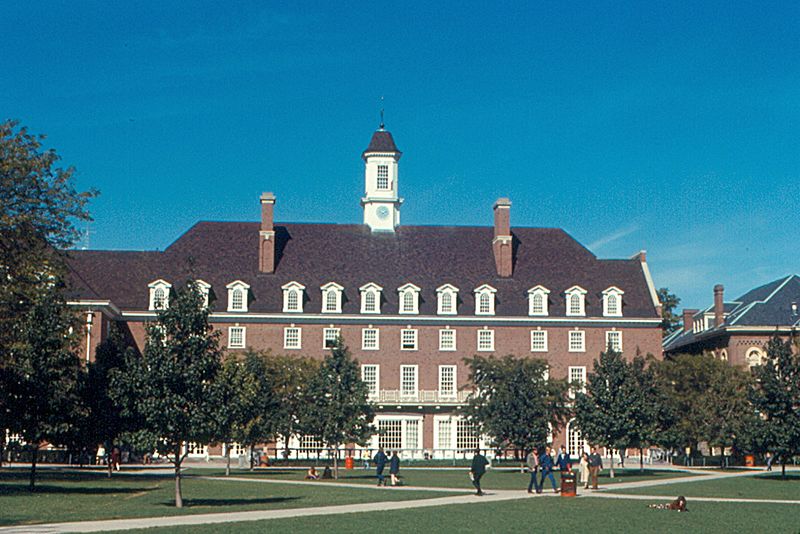
Preparing to write The Last Great Road Bum, Tobar spent four days with one-hundred-year-old Milt Sanderson at his home in Pennsylvania. The Milt that makes it into the novel is not as indulgent of his free-spirited son as Virginia, Joe’s mother, but he understands Joe better than most, on a visceral if not an intellectual level.
“In the big, wet world,” Tobar writes, summarizing Milt’s Cold War cosmopolitanism, “there was always a new war waiting to metamorphosize somewhere from mud and moist air.” Collegetown life in Urbana, Illinois couldn’t contain Milt any better than it could contain Joe — for both men, the poorer regions of the world sat always beyond the horizon, dark but available, forever humming with the promise of adventure and discovery.
While the son did his road-bumming without the pedigreed refinement of the father, the two nevertheless shared something of a common outlook: a worldliness both weary and insatiable, with the heroic figure of the traveling researcher — white, male, midwestern — always at its core. And like Joe, Milt’s road-bumming ultimately earned him a place in history. In 1959, Milt traveled to the Dominican Republic, where he met a local man who escorted him to an unexplored deposit of Dominican amber; today, the official website of the The Milton Sanderson Amber Collection claims the paint cans Milt schlepped home from the island and abandoned under a sink at the University of Illinois contained “the first collection of early Miocene Dominican amber ever made.”
Milt wasn’t much interested in the politics of the places he visited; his eyes were generally aimed downward, seeking out the ants that were the objects of his scientific inquiry. Joe, on the other hand, never cared much for ants. His interest was always in people, and in the conflicts and upheavals they could create.
Joe’s induction to the road-bumming life, circa 1958, coincided with a curious period in US social history. This was a time when, in the words of historian Van Gosse, “the certainty of American life seemed to stretch to the horizon and beyond.” And yet it was at precisely this moment that the unpredictable currents of Cold War cosmopolitanism in the US produced a widespread hankering for the human drama of overseas conflict — especially among the young, male, and middle-class.
Joe’s early coming of age took place during what Gosse calls “the furious, unconsummated courtship” of US popular culture and the Cuban guerrilla insurgency. In 1957, three brothers, the sons of Army personnel stationed at Guantanamo Bay, defected to join Castro in his fight against the US-supported dictator Fulgencio Batista. When the teenagers appeared before news cameras some time later, bearded and suntanned, the Cuban barbudos became transnational symbols of nonconformity and courage. They attracted North American volunteers by the boatload. “By 1958,” Gosse writes, “Batista’s police were deporting any Yank wearing combat boots.”
The adherents of this “Yankee fidelismo” tended to be people like Joe: the favored sons of college-towns and suburbs, reared in the sterile America of the post-war political consensus. Their generation had no practical idea of left wing politics beyond the “stylized paranoia” of the anti-Communist blacklists. Nor did they have any cultural avant-garde adequate to the exhilaration of the times — the forward march of North American progress, in unfurling so many lawns and golf courses, had left no Bohemias behind.
The post-World War II generation’s sincere fascination with the guerrilla ethos in Cuba didn’t necessarily connote an endorsement of, or even tolerance for, Third World liberatory politics. One of the young white men entranced by the sentimentality of the Sierra Maestra was Robert K. Brown, a gun-obsessed and fervently anti-communist mercenary who would go on to publish the magazine Soldier of Fortune. In the 1980s, the magazine organized armed expeditions in support of the Salvadoran military (“We’re just meeting Reagan’s call for private sector participation,” Brown quipped). In some ways, clearly, the vicarious experience of ‘going primitive’ in Cuba actually fortified the romantic militarism of the New Right.
On the cusp of the 1960s, the dizzying encounter between North American masculinity and the heroic symbolism of Third World revolution drew many men of Joe’s generation to Cuba. While this “great going-out into the world by young white North Americans” (in Gosse’s words) may have reflected a crack in the foundation of American exceptionalism, it also represented, for some, a fresh opportunity to test the boundaries of American maleness, and to re-assert its dominance.
Joe never made it to Cuba; his internacionalista moment came twenty years later, in a different conflict and in the midst of very different geopolitical circumstances. And Joe’s personal ideological cocktail, that ostentatious mixture of beatnik optimism and cosmopolitan curiosity that drove him around the globe, was surely worlds away from whatever internal darkness motivated men like Robert K. Brown. Still, Joe was formed in the crucible of the same historical moment. It’s no coincidence, I think, that in Tobar’s novel, sixteen-year-old Joe happens to catch a glimpse of Cuba in the distance and becomes suddenly, permanently, enthralled by the sprawling possibilities of the wide, wet world.
Joe’s madcap travels — a deluge of destinations and encounters and hurried lines of flight — span almost 150 pages of The Last Great Road Bum (“The Part About the World: Pax Americana”). This is the bridge between Joe’s campus-brat upbringing and his arrival in El Salvador at thirty-seven years old, an aged road bum ready to fight. Until he commits to guerrilla service, Joe is never a principled socialist, or even an especially political person, despite an obvious affection for the underdog. What he is, always, is a writer — and one determined to make his literature by living. “Being a writer isn’t just what you live,” he opines along the journey. “It’s the old soul you become, the road-bum knowledge that seeps into your brain with each kilometer.”
While Joe is always a writer, he is seldom a good one. His prose is simultaneously overwrought and under-considered. His stories are packed with places but empty of people; the relationships they reveal are brief, glancing, often emotionless, and the central character is always, unmistakably, Joe. Even Tobar acknowledges that Joe’s manuscripts are “largely unreadable.”
Still, writing is Joe’s vocation as much as road-bumming is. By the fall of 1979, when Joe lands in El Salvador, he has already learned to scribble with an intensity that raises his compañeros’ eyebrows; when it ends, unresolved, in 1982, his war diary will span some 200,000 words. In El Salvador, Joe senses in his every observation the great hum of meaning; he thinks of himself as “the only American with unencumbered eyes upon the drama.” His compulsion is to scrutinize each experience for some impression weighty enough to chisel free, hold to the light, preserve on the page.
There is an element of ethnography in Joe’s impulse to travel the world taking notes. At the heart of ethnography is the proposition that a person can, through conditioning and practice and intellectual will, transform himself into a scientific instrument. The ethnographer uses his person to gather data; in his interactions with the world, he is like a qualitative thermometer, calibrated to measure, somehow, the aggregate flows of dread and desire and deed that condition the social habitat. And indeed, the solidarity movement was characterized, to an extent, by a similar impulse. For some North American observers, the Central American revolutions registered as literary events as much as political ones.

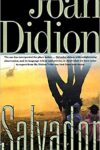
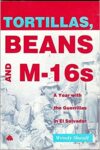
Books written in English upon their authors’ return from Central America came to constitute something of a cottage industry in the 1980s and early ‘90s. Joan Didion’s paranoid Salvador (1983) became, in memoirist Roberto Lovato’s words, “the best known description of El Salvador in the English language.” Salman Rushdie wrote a whole volume of personal essays (The Jaguar Smile, 1987) about a three-week trip to Nicaragua; in the preface, he claims that he embarked on the journey with no intention to write about it, “but my encounter with the place affected me so deeply that in the end I had no choice.” Beyond these famous examples, a sprawling cohort of amateur and lesser-read internacionalista-writers also produced personal narratives (generally with more verve and political sensitivity than their high-literary counterparts, though not always), under titles like Tortillas, Beans, and M-16s (1990), and The Best of What We Are (1995).
It’s a utopian and self-aggrandizing idea, that proposition at the heart of ethnography, but it’s the kind of modernism that seemed to resonate with Milt Sanderson’s son. Still, whether he grasped it or not, Joe faced a version of the same paradox Milt encountered on his own travels: to study something, to probe it with a scientific instrument, is to transform it. The ethnographer was present in his study, and so he could not escape the gaze of the people he observed.
In The Last Great Road Bum, Tobar resists the internacionalista’s ethnographic impulse by periodically abandoning Joe’s perspective, bringing the narrative to rest, however briefly, inside the minds of the Salvadorans who encounter him. One compañero, for example, lays eyes on the “ridiculous number of stamps” in Joe’s passport and sees with sudden clarity “the manic, improvised life of a free man wandering across borders.” Another wonders at the fearsome power of Joe’s dark country, its ability to absorb migrants and never let them go.
It is unfortunate that so many stories of Central America’s revolutionary experience arrived in North America mediated through the personal narratives of foreign observers. In Central America, the revolutionary period was marked by the emergence of insurgent popular literatures that together came to constitute a kind of revolutionary poetics. This outpouring of popular literature was paired with a massive nationwide literacy drive in Nicaragua. Noting “a tremendous proliferation of poetry workshops,” the novelist Julio Cortázar wrote that the revolution delivered to ordinary Nicaraguans a “luxurious array of fruit: language itself, out of which words are picked, savored, polished, and bitten into with satisfaction.” To Cortázar, at least, the region’s revolutionary poetics looked like the germ of a mass literary culture.
Prior to her trip there, the poet and essayist Adrienne Rich was perplexed by Nicaragua’s association with poetry in the international imagination; upon her return, she pondered the strangeness of “returning from a revolution where ‘everyone is a poet.’” Rushdie noted, with a touch of irritation, that volumes produced by Nicaragua’s state-run publishing house generally sold better than books in England. And in El Salvador, according to Lovato, a poem by Roque Dalton came to be regarded as “a national anthem” of the insurgency. So in Central America, too, the revolutions were experienced as literary events — although this meant something altogether different than in the US, where literary culture remained too cloistered, too isolated, to become the stuff of politics.
At one point in The Last Great Road Bum, a Salvadoran asks Joe, “Why are you here?” Suddenly Joe’s words fail him. His speech comes out raw and broken, in an emotional Spanish idiolect that betrays its nasal midwestern base. Later, however, Joe finds he can serve the revolution by writing. Feverishly, on a battered typewriter, he hammers out his Road Bum’s Manifesto, addressed to the Congress of the United States, “one declaratory sentence after another.” When a compañera reads it aloud over the radio, Joe’s words are like the “pages of a book, floating down from the sky.” After a lifetime of scribbling, it’s his first exposure to a real public audience.
These moments, some of the most arresting in the novel, capture in miniature the missed encounter between the internacionalista genre of memoir and Central America’s revolutionary poetics, allowing us to perceive, like a cry in the distance, the howl of an internationalist literature that almost was. Only a collaboration as unlikely as this one — between Joe Sanderson, frozen in time, and Héctor Tobar, writing from forty years in the future — could accomplish a feat like that.
As a young writer, Joe managed to bear witness to a new world emerging without ever once capturing that world on a published page. This wasn’t Joe’s failure alone: If Walter Benjamin’s angel of history moved backwards, observing society’s wreckage but blind to its progress, the many avatars of Joe’s wandering generation — booted boys in Cuba, beatnik wanderers like Joe — saw the whole world blurry, victims of their own velocity.
In his pre-El Salvador travels, Joe witnessed the cascading decolonizations of the 1960s and 1970s: an explosion of popular struggle with few analogues in history, when diverse local conflicts became grafted together (albeit imperfectly) through a world revolutionary program that promised nothing less than an alternative modernity. Whether he grasped it or not, Joe traveled always in the glow of this incandescent hope — and also under the shadow of imminent worldwide backlash.
Tobar evokes something of this historical context by framing Joe’s road-bumming days with the phrase “Pax Americana.” Joe’s journeys took place during a time when the vernacular of empire was increasingly spoken with an American accent. This was the period that crystallized “the tragedy of American diplomacy:” even as US political culture celebrated self-determination above all else, US foreign policy could never tolerate an “open door” for the comprehensive social revolutions decolonization demanded.
The Central America solidarity movement, arriving as it did in the fearsome twilight of the Cold War, seemed to offer a glimmer of hope that this tragedy could be overcome — that “an advanced period of class struggle” could break down national boundaries and dismantle the American superpower from below. “The sterile obsessions of the past are slowly falling away,” Van Gosse wrote in 1988. At the very least, maybe solidarity forged in political struggle could focus the energies of Joe’s wandering generation, like light through a telescope or magnifying glass, and the blurriness of Pax America would give way to something clearer. “Perhaps, at last,” Gosse continued, “we have just begun to fight.”
At its best, the Central America Solidarity Movement embodied a spirited and fighting internationalism — working-class kinship in the face of transnational backlash — that hasn’t been replicated in any North American social movement since. But even as they responded to the call of history, the internacionalistas also embodied the contradictions of their place and time.
Adrienne Rich wrote her celebrated essay “Notes Toward a Politics of Location” after returning from her own internacionalista moment in Nicaragua. When she delivered it as a speech in 1986, it announced her final reinvention of the self, the last and most potent paradigm shift in a life defined by repeated transformation. Rich had already rejected the masculinist fantasy-land of formalist poetry in favor of a globalist feminism based on shared womanhood. Now, Rich found, her universalism couldn’t withstand her experience of revolution.
“Under the hills of the Nicaraguan-Honduran border,” Rich wrote, she could finally “feel what it means, dissident or not, to be part of that raised boot of power, the cold shadow we cast everywhere to the south.” This was the internacionalistas’ privilege and also their tragedy: they could never be entirely untangled from the sticky webbing of what Cortázar (himself an internacionalista, though not a North American one) called “the mammoth spider to the north.” They remained enmeshed in human networks that spiraled backwards, northwards, towards the American superpower and its citizenry.
Like Joe, Rich was a product of the North American college town. And like Joe, she was partially the creation of an academic father, the pathologist Arnold Rice Rich, whose worldview was deeply conditioned by the intellectual routines of North American scientists and their view-from-nowhere expertise. Rich felt to align herself with the world’s freedom movements, as a citizen of the United States, she first had to first endure a process of personal breaking-down, “the splitting open of meaning yet again in our politics and in our lives.” Rich’s political commitments were, of course, stronger and more considered than Joe’s (at least until his arrival in El Salvador), and surely no one would dispute that Rich was the far superior writer. But I think it’s not outlandish to think of the two as kindred spirits. Like Rich, Joe experienced something of that terrible “splitting open;” it came to define him, in a sense, just as it now defines the story of the life he lived. But unlike Rich, Joe didn’t get the years of writing and reflection required to come to terms with that transformation within himself, much less to represent it on the page.
According to a new biography, Rich endeavored to recreate herself after Nicaragua, as a “responsive member of many concentric societies, no one more important than the next, all surrounding her breathing, pulsing human body.” This required that she abandon the politics of global womanhood for a worldview altogether more complex and demanding. It also required her to recognize that her identity as a North American “white woman… growing up in the suburbs of a deeply segregated city” could never be transcended. It would always sit in unsteady alignment with every other element of herself, including the liberationist impulses that brought her into conflict with her inherited privilege.
As forcefully as Rich rejected her origins, she now knew they could never leave her entirely. She recognized that her politics, like her poetics, were “not original,” but simply her “untutored and half-conscious rendering of the facts of blood and bread, the social and political forces of my time and place.” It was a devastating realization, disorienting to both her poetry and her feminism. But it was also the insight at the core of Rich’s “politics of location.”
No matter the fire of their convictions, internacionalistas were ultimately defined by their capacity for retreat. In places like Nicaragua or El Salvador, people like Rich still held American dollars, US passports, families with savings accounts, coins to make a final phone call, beg a plane ticket, go home. They could only accompany the revolution; they would never inhabit it. Any politics adequate to the challenge of internationalism, Rich felt, would have to understand that difference, and build its idea of solidarity from that place of humility and reckoning. It’s likely that Joe, like Rich, found something like that sublime humility in the end. I’d like to think that he, too, came to see himself as a fearsome constellation of inherited identities, hanging always in unsteady alignment no matter how much road dust he put between him and Urbana.
The historian Kristen Cheasty Miller points out that for Joe to integrate himself as a militant in the FMLN required that he submit totally to the organization’s command structure. He could not travel, nor communicate with family, nor associate with anyone beyond his immediate neighbors without the organization’s explicit approval. For Joe, and for the handful of other North Americans who accomplished similar feats of solidarity, joining the revolution meant surrendering their velocity, their freedom, that unique capacity for globetrotting that they inherited but did not earn. For a road bum like Joe, to become a revolutionary was to accept the end of the road.
On one level, The Last Great Road Bum is, like Rich’s essay, a meditation on places and their politics. Geography drives the novel’s action as much as personalities do. But it is also the story of one man coming to reject, in Rich’s words, “a country stuck fast for forty years in the deep-freeze of history” in favor of the revolutions that brought history, shouting and bleeding, to that country’s front door. The novel hums with the heroism of that choice, but also the hubris of it — to yearn sincerely for revolution, and to seek it out, even as your silhouette still casts the mighty shadow of empire before you.
Back in the States between road-bumming stints, calling himself “the Polecat,” Joe sometimes found work as a public sector daredevil-for-hire: he drove to schools and courthouses, repainting flagpoles. “Like a caterpillar, hands and knees squeezing steel,” the Polecat looked down at landscapes of quilted cornfields, schoolyards, small-town grids. For a few breathless minutes at the crest of each pole, Joe endured a rare experience: he was forced to hold still. His trajectory was suspended in air.
It’s possible that El Salvador, by focusing his attention on a single point, forced Joe into a similar kind of stillness. He wouldn’t be the first writer affected that way: in Central America, Salman Rushdie described feeling “close to the fulcrum of history, a time when all things, all the possible futures, were still (just) in the balance.”
There is a certain ambiguity about Joe that makes him an imprecise and unwieldy literary figure: a hero as complex as a living person, which of course he cannot help but be. But whatever his limitations, Joe was, in the end, sensitive enough to shrug off the blinders of his location — to dislocate himself, as best he knew how, from the vain mundanities of college-town life in Illinois. It was his tragedy, and his family’s, that this dislocation could only be total, irrevocable, sealed by what Joe described, in one prophetic journal passage, as “the loss of the last sanctuary of innocence that was his own flesh and blood.”
In death, the last great road bum resolved the tension at the heart of Rich’s politics of location better than any internacionalista who made it home. Joe could not retreat. He got no homeward journey, no opportunity to ponder the strangeness of leaving the revolution behind. Only his journal — written day-by-day, and in the heat of battle — made it out of the forest. It traveled first down dirt paths in the hands of couriers, then under boxes of fruit past military checkpoints, then on a fishing boat, hidden amidst the mangroves, across the Gulf of Fonseca and eventually to the relative safety of Managua. Many years later, after the 1992 peace accords that allowed the FMLN to enter public political life, Joe’s journal found its way to a museum archive in San Salvador. There it remains.
While it’s not a book about the solidarity movement, not exactly, the movement’s memory hangs like smoke over The Last Great Road Bum’s pages. Between the lines of this perceptive and powerful novel, one can sense the silent presence of every internacionalista who made it home. Because the last great road bum, Joe Sanderson of Urbana, Illinois, did not.
Jonah Walters is a PhD candidate in geography at Rutgers, The State University of New Jersey. His writing has appeared in Jacobin, NACLA, the Guardian, and elsewhere.
This post may contain affiliate links.




